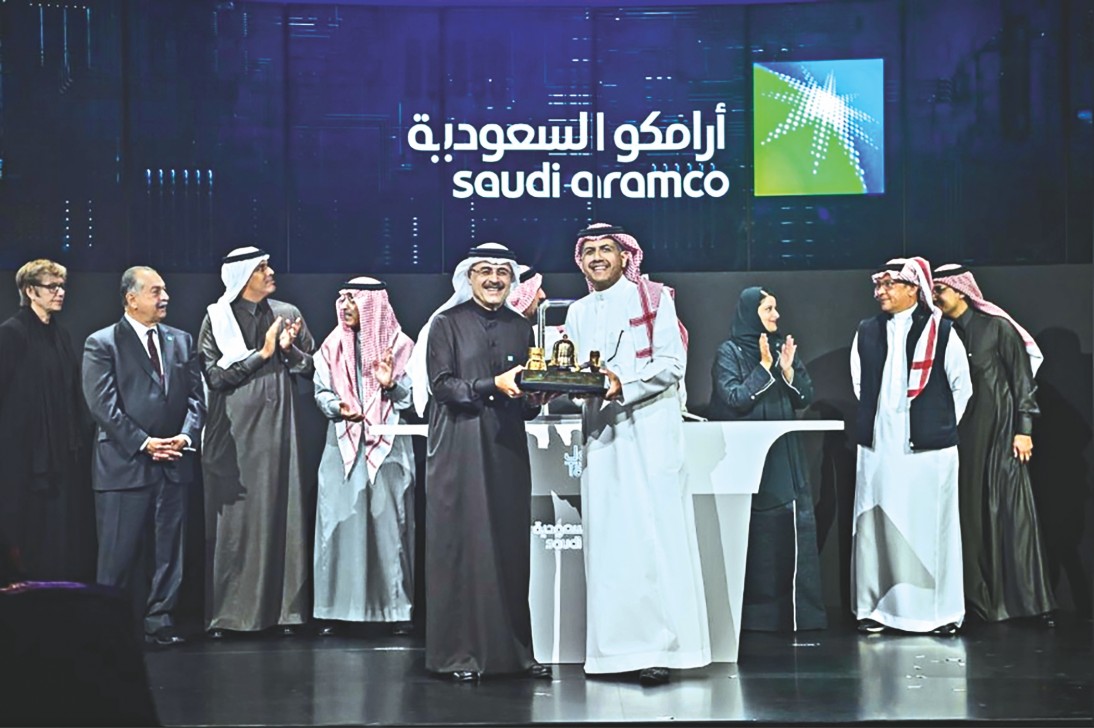Why Saudi is listing its crown jewel

Saudi oil giant Aramco’s valuation soared to $1.88 trillion on Wednesday as it hit the domestic stock exchange after the world’s largest initial public offering.
The kingdom sold 1.5 percent of the company, three billion shares worth $25.6 billion, to fund its “Vision 2030” plan to wean the economy away from oil.
But why is Saudi Arabia, which has reaped trillions of dollars from its vast energy deposits, selling off a piece of its economic crown jewel? - Isn’t Saudi Arabia wealthy already? - Despite its almost unimaginable oil wealth, Saudi Arabia’s finances have sagged along with the price of crude, causing its budget deficit to balloon.
It still has around $500 billion in fiscal reserves run by the country’s central bank and some $250 billion managed by the public investment fund (PIF), the kingdom’s main investment vehicle.
“It’s a fact that Saudi Arabia is gradually running out of money,” General David Petraeus, who is currently chair of the KKR Global Institute, said in a November television interview in Abu Dhabi.
“The bottom line is that they need the money, they need that outside investment that is crucial to delivering ‘Vision 2030’.” Another factor could be young ruler Crown Prince Mohammed bin Salman’s desire to “have a flashy project to show he is reforming the country”, said Hossein Askari, a professor of international business at George Washington University.
Pressing ahead with the Aramco listing, despite it falling short of a hoped-for $2 trillion valuation, is more about “following through with a political statement by the crown prince”, said Karen Young from the American Enterprise Institute.
“It is about making a debut to the international investor community, and to legitimise the state to a global audience of peers.” - How will the funds be used? - Since Prince Mohammed came to power, Saudi Arabia has unveiled plans for a series of “giga projects” that will soak up tens of billions of dollars, but also hopefully bring investment and thousands of jobs.
Those visions include the Red Sea Project, to be built across an archipelago of 90 islands off the Saudi port city of Jeddah, and stretch into nearby deserts and mountains.
NEOM, a $500 billion futuristic mega city, is planned on the northern Red Sea coast, complete with flying taxis and talking robots.
And last year, construction of the Qiddiya “entertainment city” was launched near Riyadh, with the blueprints including high-end theme parks, motor sport facilities and a safari area.
Saudi Arabia was hit by high levels of capital outflow in 2017 -- the year that Prince Mohammed spearheaded an anti-corruption campaign that led to the arrest of hundreds of princes and businessmen.
The shock move cemented his rule, but also made international investors nervous.
“The regional political risk climate, Saudi foreign policy choices and repression of political dissent have all likely dampened investor sentiment,” Young told AFP.
